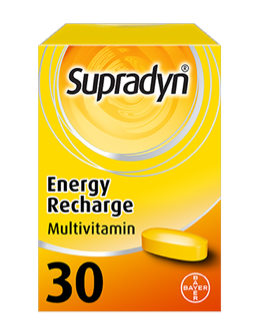FOR HEALTHCARE PROFESSIONALS
How it works: Role of micronutrients in children’s growth and development and risk of micronutrient deficiencies
Childhood and adolescence are times of rapid physical, mental, and immunological development.
That is why children and adolescents have an increased micronutrient need to support the immune system, physical growth & development, and brain function. Their bodies, however, cannot support such a quick development without a healthy micronutrient status. Lack of a well-balanced diet and occasional periods of illness put children and adolescents at a higher risk of micronutrient deficiencies, which can hinder proper development and reduce the effectiveness of the immune system. Micronutrient supplementation contributes to a healthy lifestyle in children by boosting their immune system, increasing bone density, benefiting weight and height gain and improving cognitive performance and motor skills. When taken in combination, vitamins and minerals interact with and support one another providing building blocks for a healthy organism. For example, iron is better absorbed in combination with vitamin C, which keeps it soluble and by reducing it to the more absorbable Fe2+. Calcium increases the absorption rate of Vitamin B12, while B-vitamins work together to support brain function and produce energy. The proper balance of vitamins and key micronutrients such as Vitamin C, Vitamin D, zinc, and iron is not only fundamental for normal development of the immune system, but it also helps reduce susceptibility to infections, prevent the onset of viral infections, and reduce the duration of the common cold. Supradyn vitamin supplements for kids promote healthy physical growth and development, support healthy cognitive development, strengthen the immune system, and help children recharge and recover during and after illness.
Micronutrients are needed for growth and development
Children and adolescent have an increased need of micronutrients for
Many children do not have an ideal diet and may undergo periods of illness, putting them at risk of micronutrient deficiencies. One of the primary reasons of people feeling low in energy is due to a dietary insufficiency in micronutrients. So, if you have low levels of micronutrients, that’ll quite often be seen as increased levels of fatigue and tiredness. Micronutrient deficiencies/insufficiencies may have detrimental effects on the growth and development of children, and may reduce the effectiveness of the immune system. The main causes of micronutrient insufficiencies in children often include special diets, periods of illness, excess consumption of carbonated sodas, and a lack of regular, well-balanced meals or fussy eating.
A growing body of evidence is beginning to demonstrate the importance of optimum vitamin status for maintaining good health and preventing disease1-3
Synergistic effects of multiple micronutrients
Some micronutrients may have mutually beneficial, or synergistic effects, when taken in combination, for example, in supplements containing multiple micronutrients
Vitamin C is a strong promoter of iron absorption7,8. Potential mechanism:7
- Reduction of iron to the absorbable ferrous (+II) form
- Chelation of iron, keeping iron soluble
Complementary roles in supporting aspects of both innate and adaptive immunity, including:5,6
- Skin and mucosal barriers
- Neutrophils, monocytes and macrophages
- Antigen presenting cells
- B- and T-lymphocytes
- Interferon
Zinc is involved in the metabolism of vitamin A3. Potential mechanism:3
- Mobilisation of vitamin A from the liver
- Stimulates synthesis of retinol-binding protein, involved in mobilisation of vitamin A from liver stores and transportation in plasma
Vitamin A status is associated with haemoglobin levels7. Potential mechanism:7
- Mobilisation of vitamin A from the liver
- Incorporation of iron into haemoglobin in the erythrocyte
Vitamin B2 is associated with iron absorption7. Potential mechanism:7
- Increases activity of NADH-FMNnoxidoreductase, involved in the mobilization of iron from mucosal ferritin
Calcium is involved in the absorption of vitamin B12 from the ileum9
Work in combination to support brain function through involvement in energy production, DNA/RNA synthesis/repair, methylation, and neurochemical/signalling molecule synthesis10
The role of multivitamin and mineral supplements in children’s development
Vitamin and mineral supplements help children and adolescents go through a period of rapid physical, mental, and immunological changes. Although a well-balanced diet should provide all required micronutrients, many children across the world still suffer from micronutrient insufficiency. Given the vital role vitamins and minerals play in the early stages of children’s development, multivitamin supplementation can help establish a healthy lifestyle when the optimal micronutrient level is not met. As the research shows, micronutrient supplements protect against acute respiratory infection, shorten the duration of the common cold, increase bone density and the speed of weight and height gain, as well as improve cognitive and motor skills, including academic performance. The vitamins and minerals in Supradyn Kids have been extensively studied and the results prove their beneficial impact on children’s health and vitality. Supradyn Kids includes micronutrients that contribute to a normal function and maintenance of the nervous system, normal muscle function and metabolism, as well as maintenance of bone and connective tissue structure, and many more. Regular supplementation with our vitamins for kids helps prevent potential consequences of micronutrient deficiencies, such as impaired immune response, general fatigue, reduced height and weight, or impaired cognitive performance and memory.
Micronutrient supplements can promote health in children by supporting:
- Protecting against acute respiratory tract infection
Martineau AR et al. BMJ 2017;356:i6583
- Shortening the duration of the common cold
Hemilä H. Open Respir Med J 2011;5:51–8
- Increasing bone density
Johnston CC Jr, et al. N Engl J Med 1992;327:82–7
- Increasing the speed of weight and height gain
Kaseb F, Fallah R. World Applied Sciences Journal 2013;26:189–93
- Increasing growth and improving coordination of cognitive and motor skills
Johnston CC Jr, et al. N Engl J Med 1992;327:82–7
- Increasing ability to analyse information and solve problems non-verbally (without using words)
Benton D, et al. Lancet 1988;1:140–3
Schoenthaler SJ, et al. Person Indiv Diff 1991;12:351–62
Conclusion
Supradyn Kids can provide nutrients during periods of increased physical and mental effort, illness, and when dietary intake is not optimal.
REFERENCES
- Micronutrient requirements of children ages 4 to 13 years. Oregon State University. Av ailable from: https://lpi.oregonstate.edu/mic/life-stages/children. Accessed August 2018;
- Micronutrient requirements of adolescents ages 14 to 18 years. Oregon StateUniversity. Av ailable from: https://lpi.oregonstate.edu/mic/life-stages/adolescent Accessed August 2018;
- KarpinskiM, et al. Roles of v itamins D and K, nutrition, and lifestyle in low-energy bone fractures in children and young adults. J Am CollNut r2017;36:399–412;
- IOM (Institute of Medicine). 2011. Dietary Reference Intakes for Calcium and Vitamin D.Washington, DC: The National Academies Press;
- SolimanAT, et al. Vitamin D deficiency in adolescents. Indian J EndocrinolMetab2014;18(Suppl1):S9–S16;
- Kruger HS. The necessity for a balanced diet in children: physical, mental and intellectual development. Av ailable from: http://www.fao.org/fileadmin/templates/est/COMM_MARKETS_MONITORING/Dairy/Documents/02__Kruger_pres.pdf. Accessed August 2018;
- EFSA, Scientific Opinion on the substantiation of a health claim related to v itamin D and contribution to normal bone and tooth development pursuant to Article 14 of Regulation (EC) No 1924/2006. EFSA Journal2014;12:3579;
- Vitamin D, in dietary reference intakes for calcium and v itamin D. A report of the panel on micron. utrients, standing committee on the scientific ev aluation of dietary reference intakes; food and nutrition board.Institute of Medicine2010, National Academy Press: Washington, D.C. 75–456;
- DeLuca HF. The v itamin D story: a collaborative effort of basic science and clinical medicine. FasebJ 1988;2:224–36;
- Bonjour JP, et al. Peak bone mass. Ost eoporosInt1994;4(Suppl1):7–13;
- KapilU. Health Consequences of Iodine Deficiency.Sult an QaboosUniversity Medical Journal2007;7:267–72;
- Zimmermann MB. The role of iodine in human growth and development. SeminCell Dev Biol2011;22:645–52;
- Singh M. Role of micronutrients for physical growth and mental development. Indian J Pediatr2004;71:59–62;
- Filer LJ Jr. Iron needs during rapid growth and mental development. J Pediatr 1990;117:S143–6; 15. Strand TA, et al. Vitamin B-12, folic acid, and growth in 6-to 30-month-old children: a randomized controlled trial. Pediatrics20
- 135:4; 16. Chu W. B v itamin deficiencies linked to poor infant development issues. Available from: https://www.nutraingredients.com/Article/2017/03/30/B-vitamin-deficiencies-linked-to-poor-infantdevelopment-issues. Accessed August 2018.













